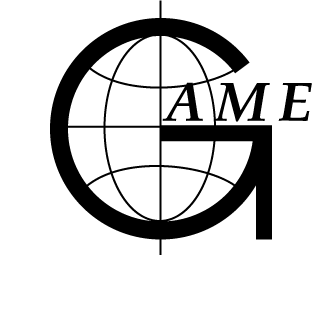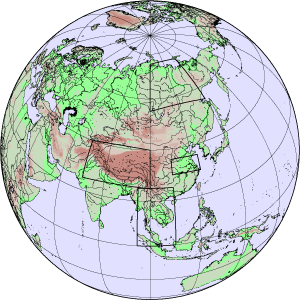|
GAME
Internatinal
Science Panel GISP |
 |
 |
Kenji Nakamura
GAME International Project Office,
Hydrospheric Atmospheric Research Center, Nagoya University
The 9th GISP was held at the Kyoto International Community House,
Kyoto, Japan, for 1 and 2 December 2004 with supports of the Ministry
of Education, Culture, Sports, Science and Technology@of Japan (MEXT),
the World Climate Research Programme (WCRP), the Japan Aerospace
Exploration Agency (JAXA), the Hydrospheric Atmospheric Research
Center, Nagoya University (HyARC) and other projects/programs. Total 52
participants including observers/experts from 12 countries joined.
The major discussion was on the follow on activity of GAME. GAME has successfully been conducted and clarified the basic processes of the land-atmosphere interactions through regional experiments and monitoring under strong international collaborations. However, the mechanism and the variation of the Asian monsoon has not yet been clear, and the necessity of the efforts for understanding of the Asian monsoon variation was recognized. Through the reports from each country, it was revealed that each country has its own serious hydrometeorological problems, e.g., extreme weathers, floods, glacier retreats, permafrost degradation, and many of them are closely related to the monsoon activity. Thus, many domestic projects with international collaborations are ongoing or are planned or are expected. Regarding the serious relationships of the hydro-climate to Asian societal issues and ecosystems, more emphases should
be on the direct contribution to applications. Thus, the necessity of the GAME follow-on activity was understood.
Regarding the scientific objectives, the GAME objectives still remain:
(1) understanding the role of the Asian monsoon and its hydrological cycle in the global climate system, and
(2) improvement of prediction of the regional or basin scale hydrological cycle and water resources in monsoon Asia.
In addition to them, a new target is:
the impact of global warming and other anthropogenic forcing on the hydrological cycle and hydro-climate
in monsoon Asia. To attain the objectives, international collaborations are essential. The gap between operational agencies and research communities should be minimized.
The concept of the GAME follow-on activity was discussed and concluded as:
GAME follow-on project should be within the GEWEX or WCRP. The tentative name may be "Coordinated Observation and Prediction of Asian Monsoon Climate (COPAM)". The target time scale is seasonal, inter-annual and long-term variations. The new project should also contribute to solve/mitigate local hydrological issues, particularly through modeling. Data exchange/sharing and coordinated model study are two keys of "COPAM".
The new program functions for:
(1) promotion of coordinated/cooperated studies among Asian monsoon countries,
(2) modeling/prediction of monsoon and hydro-climate and water resources in Asia including development,
inter-comparison and transfer of models,
(3) data collection for hydro-climate and water-resources studies,
(4) promoting international workshops, training seminars, and
(5) data archives.
For the sharing of data, WMO/WCRP data policy, that is, free and open for international research communities should be held. The components of the new program could consist of national, multi-national or international projects, the program promotion office/center, the coordinated modeling center, the data
archiving and management center, and also regional centers. The relationships of the new project with the Global Earth Observation System of Systems (GEOSS) and the Integrated Global Observing Strategy-Partnership (IGOS-P) Water Theme were emphasized.
Following GISP, the Sixth International Study Conference on GEWEX in Asia and GAME was held for 3-5 December at the same location with about 180 participants from 14 countries.
The major discussion was on the follow on activity of GAME. GAME has successfully been conducted and clarified the basic processes of the land-atmosphere interactions through regional experiments and monitoring under strong international collaborations. However, the mechanism and the variation of the Asian monsoon has not yet been clear, and the necessity of the efforts for understanding of the Asian monsoon variation was recognized. Through the reports from each country, it was revealed that each country has its own serious hydrometeorological problems, e.g., extreme weathers, floods, glacier retreats, permafrost degradation, and many of them are closely related to the monsoon activity. Thus, many domestic projects with international collaborations are ongoing or are planned or are expected. Regarding the serious relationships of the hydro-climate to Asian societal issues and ecosystems, more emphases should
be on the direct contribution to applications. Thus, the necessity of the GAME follow-on activity was understood.
Regarding the scientific objectives, the GAME objectives still remain:
(1) understanding the role of the Asian monsoon and its hydrological cycle in the global climate system, and
(2) improvement of prediction of the regional or basin scale hydrological cycle and water resources in monsoon Asia.
In addition to them, a new target is:
the impact of global warming and other anthropogenic forcing on the hydrological cycle and hydro-climate
in monsoon Asia. To attain the objectives, international collaborations are essential. The gap between operational agencies and research communities should be minimized.
The concept of the GAME follow-on activity was discussed and concluded as:
GAME follow-on project should be within the GEWEX or WCRP. The tentative name may be "Coordinated Observation and Prediction of Asian Monsoon Climate (COPAM)". The target time scale is seasonal, inter-annual and long-term variations. The new project should also contribute to solve/mitigate local hydrological issues, particularly through modeling. Data exchange/sharing and coordinated model study are two keys of "COPAM".
The new program functions for:
(1) promotion of coordinated/cooperated studies among Asian monsoon countries,
(2) modeling/prediction of monsoon and hydro-climate and water resources in Asia including development,
inter-comparison and transfer of models,
(3) data collection for hydro-climate and water-resources studies,
(4) promoting international workshops, training seminars, and
(5) data archives.
For the sharing of data, WMO/WCRP data policy, that is, free and open for international research communities should be held. The components of the new program could consist of national, multi-national or international projects, the program promotion office/center, the coordinated modeling center, the data
archiving and management center, and also regional centers. The relationships of the new project with the Global Earth Observation System of Systems (GEOSS) and the Integrated Global Observing Strategy-Partnership (IGOS-P) Water Theme were emphasized.
Following GISP, the Sixth International Study Conference on GEWEX in Asia and GAME was held for 3-5 December at the same location with about 180 participants from 14 countries.